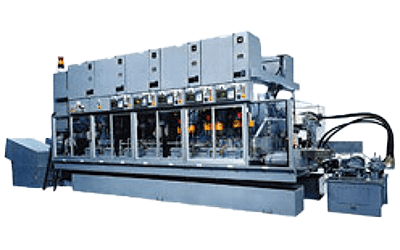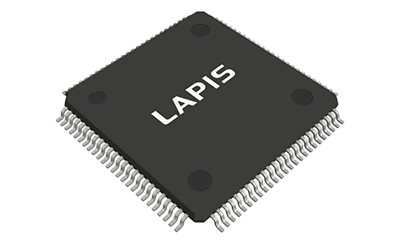¿Qué es un Ventiloconvector?
Un ventiloconvector es un aparato de aire acondicionado compuesto generalmente por un intercambiador de calor (batería), un filtro de aire y un motor ventilador.
El agua fría o caliente enviada desde la unidad principal a través de tuberías ajusta la temperatura y la humedad de la habitación mediante el intercambiador de calor. El filtro de aire elimina las partículas de polvo y la unidad del motor del ventilador las envía a la zona de aire acondicionado.
Se trata de una unidad de aire acondicionado relativamente pequeña y sencilla. También se denomina fancoil, sobre todo en el caso de las unidades de calefacción dedicadas.
Usos de los Ventiloconvectores
Los ventiloconvectores suelen instalarse y utilizarse en oficinas, hoteles, hospitales, escuelas y grandes locales comerciales. El tipo más común de ventiloconvector es la unidad de aire acondicionado rectangular por habitaciones, con una rejilla de ventilación rectangular en el techo.
Los ventiloconvectores se utilizan principalmente para controlar la temperatura en el interior, mientras que el intercambio con el aire exterior lo realiza la unidad de aire acondicionado (UTA). Las brisas de refrigeración y calefacción de todo el edificio se unifican y suelen utilizarse para fines generales de climatización más que para necesidades individuales.
Principio de los Ventiloconvectores
Los acondicionadores de aire constan de una unidad interior de aire acondicionado y una unidad exterior acompañada de un ventilador, que básicamente funcionan por parejas y se utilizan para fines diferentes como refrigeración, calefacción y deshumidificación para cada acondicionador de aire individual. Los ventiloconvectores, por su parte, climatizan el agua fría o caliente enviada desde la unidad principal a través de tuberías por medio de intercambiadores de calor en cada unidad ambiente, por lo que se determina el tipo de climatización para todo el edificio.
Suelen utilizarse en grandes instalaciones comerciales, hoteles y hospitales, donde el objetivo de climatizar todo el edificio es fijo, y pueden proporcionar calefacción y refrigeración de forma más eficiente y económica mediante un control centralizado que instalando unidades de aire acondicionado individuales en cada habitación.
Recientemente, los ventiloconvectores se han utilizado en combinación con unidades de aire acondicionado, aprovechando su compacidad y sencillez. El ventiloconvector realiza la regulación de la carga en la zona perimetral cercana a paredes exteriores y ventanas, mientras que el aire acondicionado regula la temperatura en la zona interior de la habitación.
Tipos de Ventiloconvectores
Los ventiloconvectores están disponibles en los tipos de dos tubos, tres tubos, cuatro tubos, equipados con motor estándar y equipados con motor de ahorro de energía.
1. Tipo de 2 Tubos
Tiene una sola batería y cambia entre agua de refrigeración y de calefacción según sea necesario durante las estaciones de calefacción y refrigeración. Son relativamente baratos, tienen pocos tubos y ocupan poco espacio.
2. Sistema de Tres Tubos
Tiene un serpentín de agua caliente y otro de agua fría y una única tubería de retorno de agua fría y caliente; requiere menos tuberías que el sistema de 4 tubos, pero se utiliza menos debido a las elevadas pérdidas por mezcla de agua fría y caliente.
3. Sistema de Cuatro Tubos
Hay un serpentín de agua caliente y otro de agua fría y más tuberías. Se utiliza en habitaciones que necesitan alternar entre calefacción y refrigeración durante el día. Se ajusta con precisión, pero su instalación y funcionamiento son más caros que los sistemas de 2 ó 3 tubos.
4. Tipo Estándar Equipado con Motor
Están equipados con un motor de CA y pueden instalarse de varias formas para adaptarse al espacio y a la aplicación del edificio. Los principales métodos de instalación incluyen los tipos de montaje en el suelo, suspendido en el techo, empotrado en el techo y cassette en el techo.
5. Tipo Equipado con Motor de Ahorro de Energía
Este tipo está equipado con un motor DC sin escobillas. El motor de bajo consumo, respetuoso con el medio ambiente, reduce las emisiones de dióxido de carbono (CO2). Además, el bajo caudal de aire ahorra consumo eléctrico y reduce los costes de funcionamiento. Los métodos de instalación incluyen el tipo expuesto al suelo, el tipo oculto al suelo, el tipo oculto suspendido del techo y el tipo casete.
Estructura de los Ventiloconvectores
Las estructuras de las unidades de ventiloconvectores incluyen los tipos de doble soplado desde el suelo, conectados a conductos, montados en la pared, montados en el suelo, suspendidos del techo y de cassette montados en el techo.
1. Tipo de Soplado de Doble Suelo
El aire caliente o frío se sopla dentro del doble suelo y se utiliza en salas de doble suelo, como salas de ordenadores.
2. Tipo Conexión a Conducto
La unidad puede conectarse a un conducto para permitir que la salida y la entrada se instalen en cualquier ubicación deseada.
3. Tipo de Montaje en Pared
Este tipo se monta en la pared.
4. Tipo Montado en el Suelo
Este tipo se utiliza colocando la unidad en el suelo.
5. Tipo Suspendido del Techo
Se utiliza en lugares como almacenes donde la estructura del techo está expuesta.
6. Tipo Cassette Montado en el Techo
Instalado en el techo, con los puertos de salida y entrada en la superficie.

